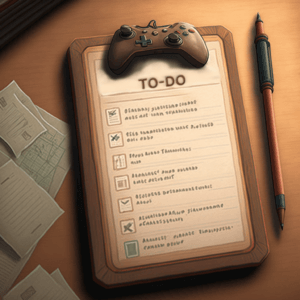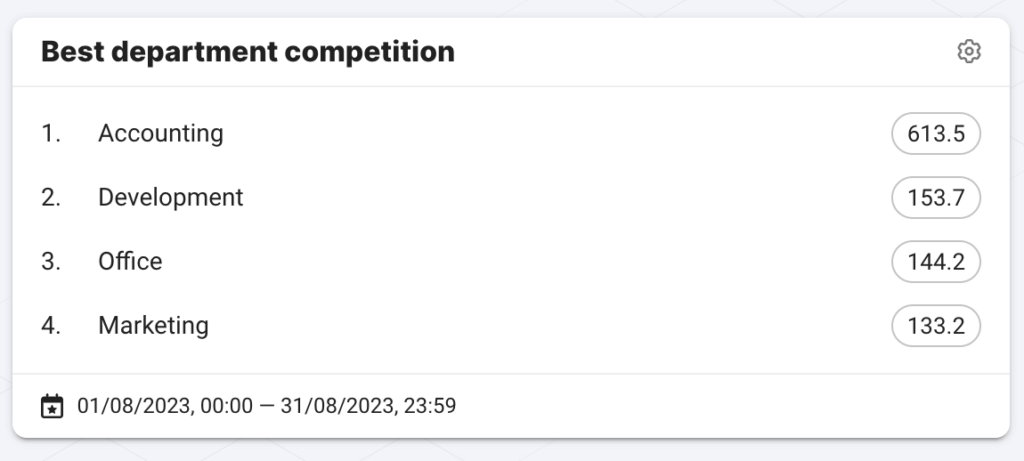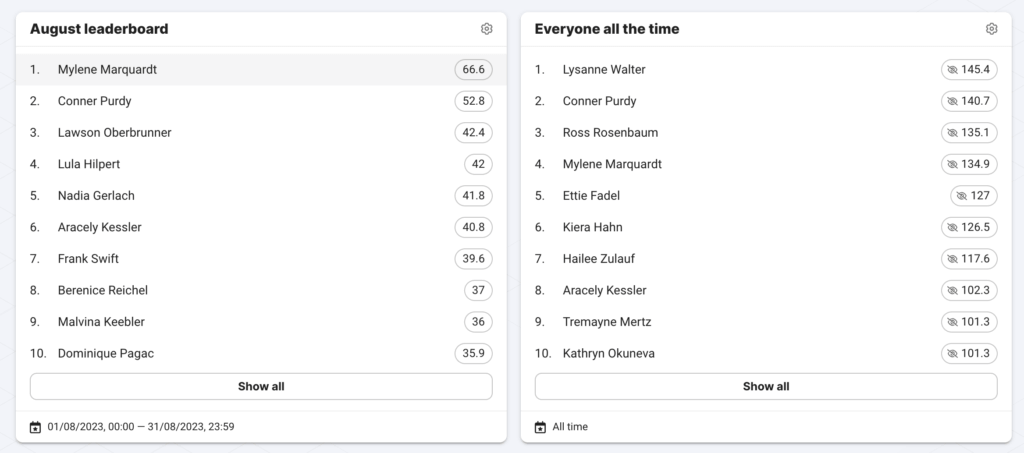Why should you gamify work?
To-do gamification makes workplace tasks more fun and engaging. It can quickly create a sense of progress and achievement. You can use workplace gamification techniques also as a way to encourage collaboration. Employees may be more motivated to help each other complete tasks and achieve goals when competing with the neighbouring department.

What is gamification?
Gamification is the process of using game like elements and mechanics to engage and motivate people to achieve specific goals. Gamification in the workplace can be a powerful tool for employee engagement, employee training, or simply improving team productivity.
Creating a gamified to-do list for your team
If you’re planning to implement gamification into your team’s to-do list, here are some ideas for setting up your own gamification program.
Identify the right gamification strategy.
Before starting with your team gamification, it’s important to understand your goal – why are you doing this in the first place. If your team members are able to get on board with your vision, the game is much more likely to increase employee engagement so that they enjoy the game.
Your gamification tactics directly depend on the general strategy. Are you trying to get a pile of tasks out of the way, make team members volunteer for additional tasks, or simply run a fun competition?
- Getting more things done should be a seasonal game with a clear goal. A game of “grab more work” will add a touch of excitement to the daily tasks, if the reward is at hand, and the game deadline close by.
It’s not possible to keep the team racing for a win all year round – nobody would watch the Olympics or the Super Bowl, if they were on every day. But it’s possible to boost employee engagement and excitement with a seasonal event – and temporarily turbocharge employee productivity. - Spirit of healthy rivalry type of competitions, on the other hand, can be spread out over the year. When team members can choose the stress and engagement levels they want to contribute to the game.
If you put volunteer tasks on your gamified list, you can probably see a few overachievers emerge from the team. These can be additional work tasks such as as leading health initiatives, managing office supplies, planning birthdays and brewing the morning coffee before others arrive – This type of game will not excite everyone, but for those few, the long-term game is worth following the leaderboards on a weekly basis. - Collective achievements can make sense if you’re running a larger organisation with multiple departments. If the game lets each team to showcase their best in comparison to their neighbours, it can foster some additional collaboration inside the team.
These games are also more likely to be short and seasonal – for example a series of team-building challenges that require employees to collaborate and communicate effectively. The department with the most successful completion of challenges wins.


Determine your metrics
To effectively gamify work, you’ll need to create very clear rules about how you measure progress and success in completing tasks. Keep it fairly simple, such as the number of tasks completed, or the time it has taken to complete tasks. The metric should work with your chosen business strategy too, and be easy to track and measure.
Try to avoid qualitative assessment, unless you’re running a popularity contest. The only exception is when you’re gamifying an external rating such as customer reviews, where the person who gives the rating is not aware of the game.
Declare the game mechanics and winning metrics in advance and stick to them. Your team should know what it takes to win, and you should never change the rules mid-game. If you’re unsure, start small and learn what motivates your team – then upgrade the rules for your next game.
Make sure you have a scoring / tracking system in place. This doesn’t have to be anything complex – in a small office, a central whiteboard can be a great scoreboard (if you can trust your team not to edit the numbers in secret). Alternatively, you can keep track in digital tools such as a shared spreadsheet, or implement a devoted gamification app. As long as you’re able to keep track of the game without manually calculating the status every time you need an update:
- who did what (and when)
- how much each tasks contributes to the person’s score
- what’s the current order of the leaderboard
It’s important that team members are able to view their own progress at any time (to check if their most recent achievements have been accounted for). It’s also motivating if they’re able to see the status of the leaderboard live – especially when we’re close to the end of the game.


Create a rewards system that makes sense
One of the key elements of workplace gamification is the use of rewards to motivate and engage employees. When gamifying a tasklist, the employee recognition comes often in rewards like badges, points, company swag, virtual or even physical trophies. You can also consider handing out employee wellness or fitness perks, extra time off, and subscriptions online courses. Or – if you have fixed working hours, allocate an additional day of paid time off.
It’s important to choose rewards that are meaningful and motivating for your team members. If multiple administrators are able to create rewards, agree on a system. You don’t want similar tasks to reward radically different rewards!
While major rewards for job performance such as cash bonuses and luxury items can motivate employees at a sales team, they tend to demotivate a more diverse team. Setting overly expensive rewards for a workplace competition can have several downsides:
- Employees may become demotivated if they feel the rewards are unattainable, leading to a decrease in overall engagement, and low employee morale.
- It can create a sense of inequality among employees, as only a select few would have the opportunity to win such high-value rewards.
- Employees might view the competition as irrelevant or unfair, leading to disengagement from both the competition and their regular work.
- The team might question the intentions behind setting such high rewards, potentially eroding trust in management’s decision-making.
- The pursuit of unattainable rewards could lead to increased stress levels and unhealthy competition among employees.
- Employees might prioritize the competition over their regular responsibilities, which could negatively impact the quality of their work.
How we can help
If you are looking for the best gamification software for your team to-do list, check out our shortlist of the best gamification apps. Or jump directly to our gamified task management tool, set up your first team leaderboard and start engaging employees within minutes!